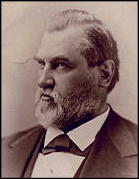




12th November 2010
Engineers & Engineering
Theodore Judah was a railroad engineer at the time of most need in the growing United States when the Central Pacific Railroad was needed and conceived as being possible to create . In fact it was Judah that presented the idea of a coast to coast line to congressmen and needed then only to decide on a route to promote. He learned about civil engineering whilst still
a young boy and consequently was a surveyor when he was aged only eighteen. As did many workers at that time he followed the work wherever railroads were being built and in 1854 he moved with his wife to California to work on the Pacific Railroad. The biggest barrier for a transcontinental
a young boy and consequently was a surveyor when he was aged only eighteen. As did many workers at that time he followed the work wherever railroads were being built and in 1854 he moved with his wife to California to work on the Pacific Railroad. The biggest barrier for a transcontinental

Stanford was a lawyer who moved west following a fire in which much of his business was destroyed. He became a store-owner and had interests in mining; both of which gave him considerable wealth and allowed him to
Crucial to the success of the venture were four Sacramento business men who took an active part in the construction of the western section - one that was made even more demanding to construct because of the mountainous terrain through which the rail-tracks had to pass. The “Associates”.
These were : Leland Stanford
These were : Leland Stanford
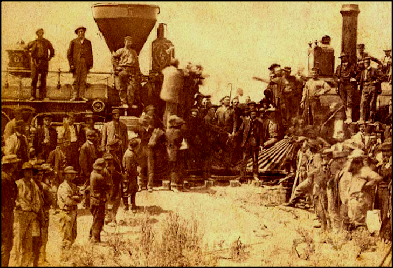
involve himself in the opportunity of building the western section of the pacific railroad.
Stanford was instrumental in the running of the operation - and to designers has the additional interesting association that it was he who commissioned Eadweard Mybridge
to use his newly invented ‘moving image’ recordings to show whether a galloping
horse left the ground
completely.
“Sallie Gardner”; one of
his own horses was the subject used.
Stanford was instrumental in the running of the operation -
horse left the ground
completely.
“Sallie Gardner”; one of
his own horses was the subject used.
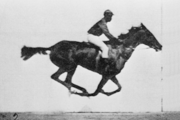
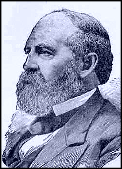
Collis Huntington built on a very limited education and through trading successes amassed sufficient money to set up in partnership with his elder brother. In 1849 he made his way to California in pursuit of wealth from the Gold Rush - building further on his fortunes. Establishing
himself in partnership with Mark Hopkins another store owner, Huntington built a position of respect and trust and when Judah travelled to lobby congress, Huntington accompanied him. He remained in Washington handling much of the financial, legal and patent tasks associated with the Central Pacific Railroad’s construction.
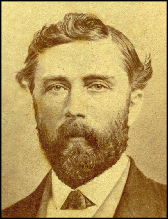
Charles Crocker was another ‘Gold Rush’ participant who spent two years working in the mines in the far west. He decided to open a store in Sacramento and rapidly became wealthy. Joining the group with Stanford, Huntington and Mark Hopkins- (another store owner working with Stanford) - Together the four set about brining a railroad to the West Coast.

Following Theodore Judah’s early death his fellow engineers -Samuel Montague and Lewis Clement -continued directing the work that Judah had begun.

